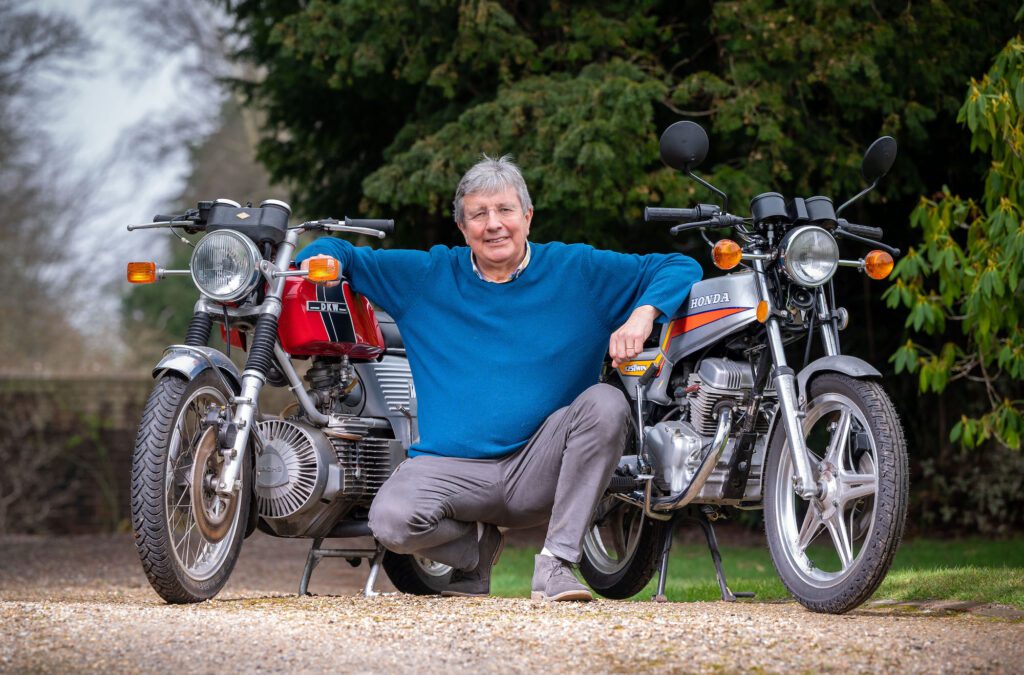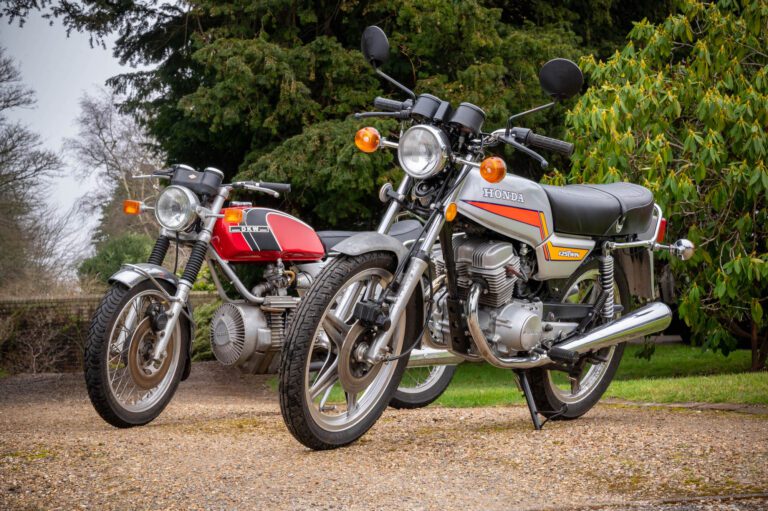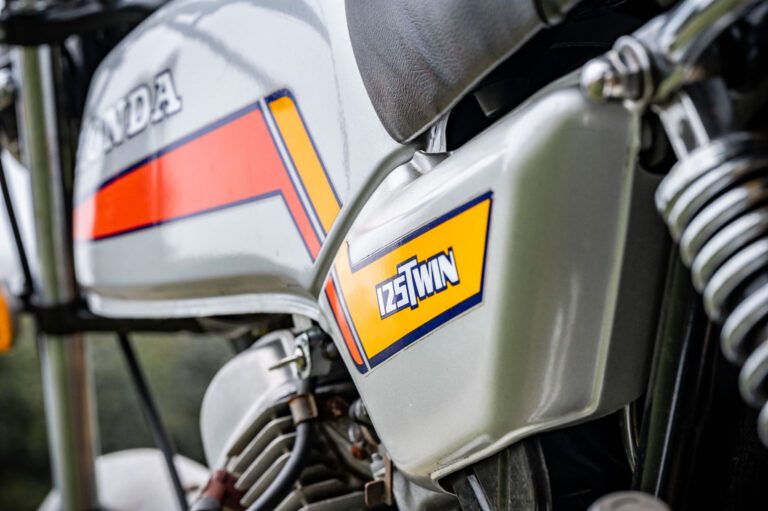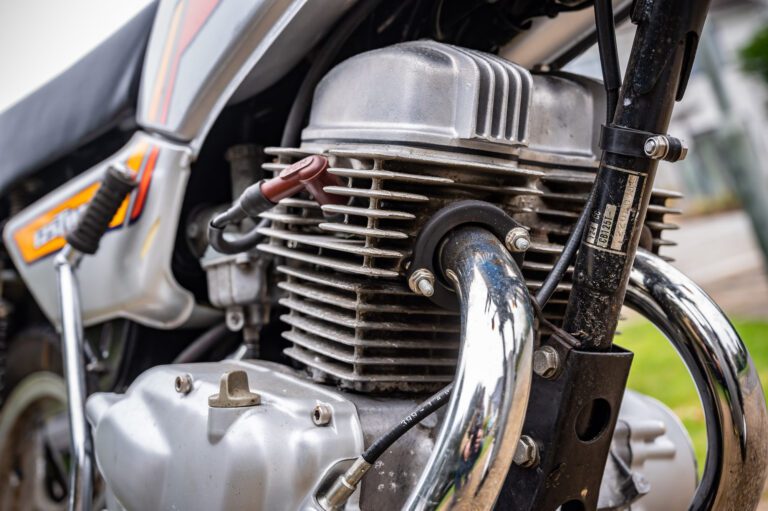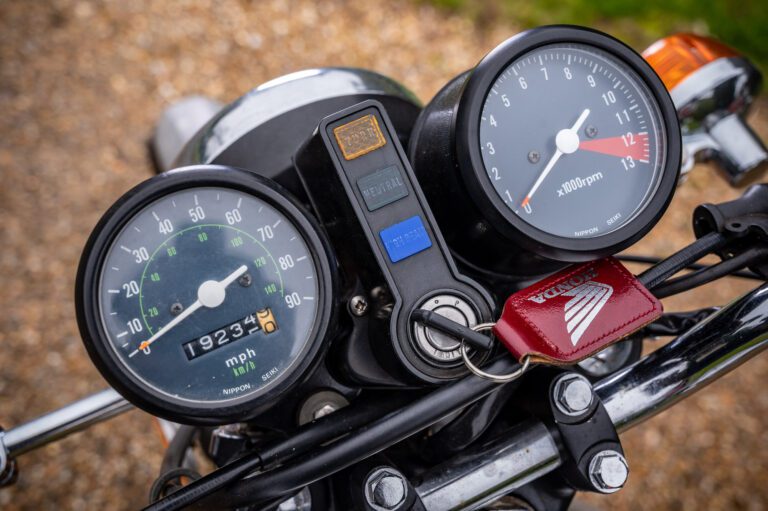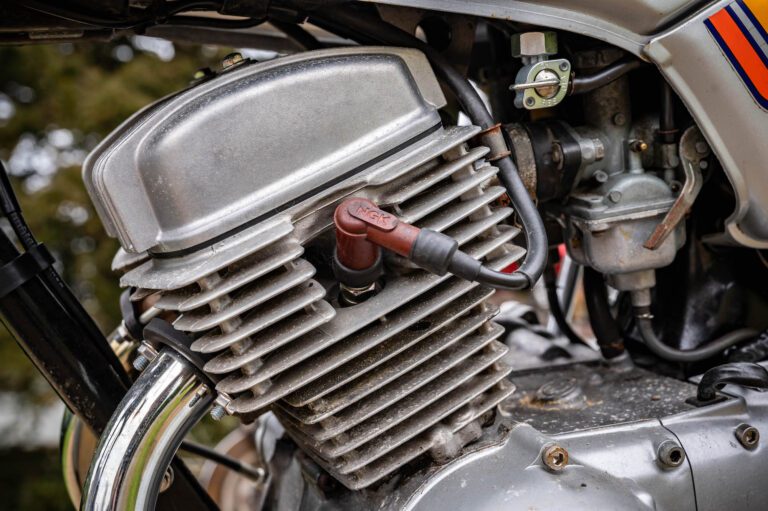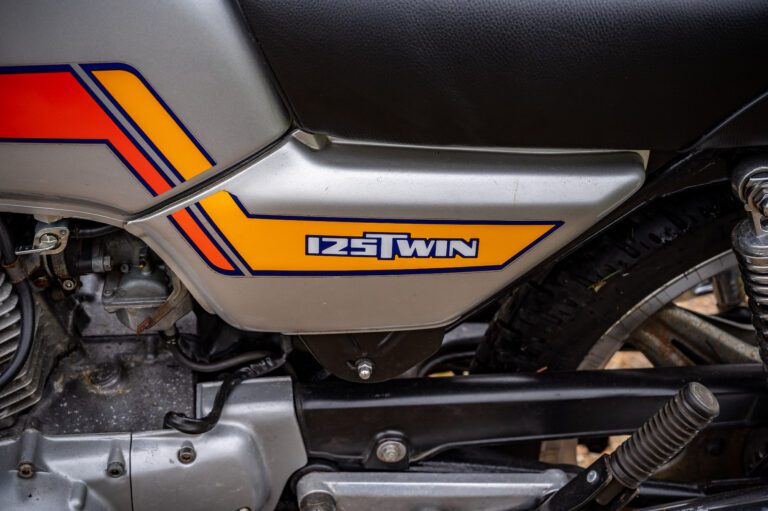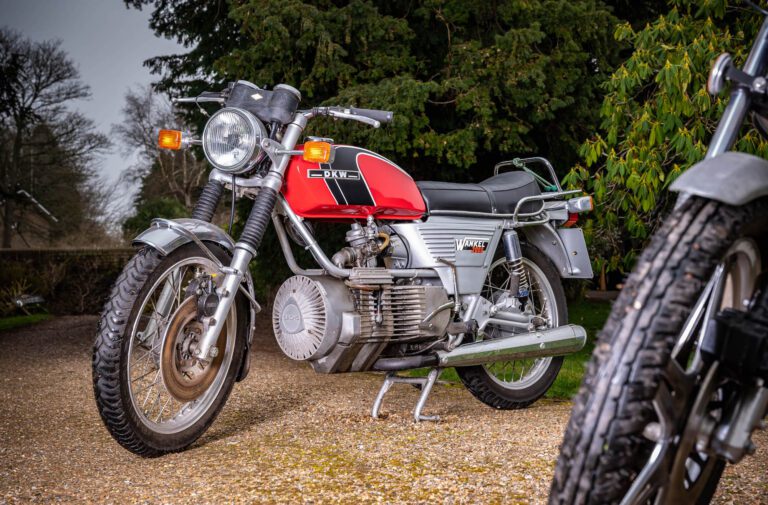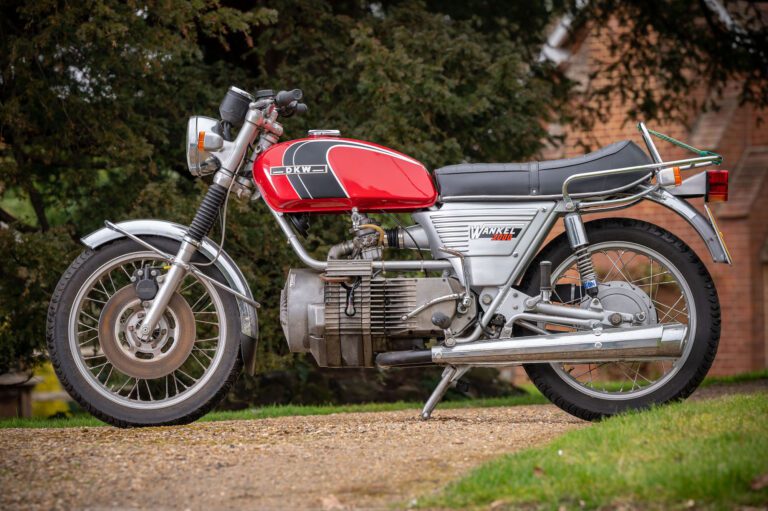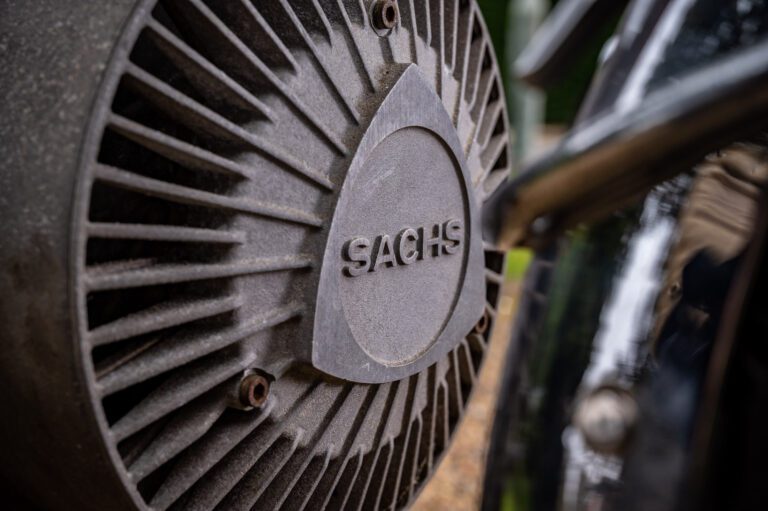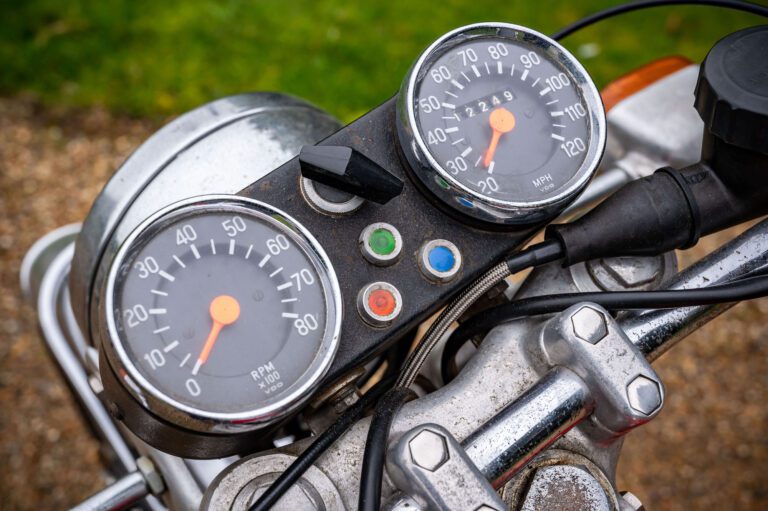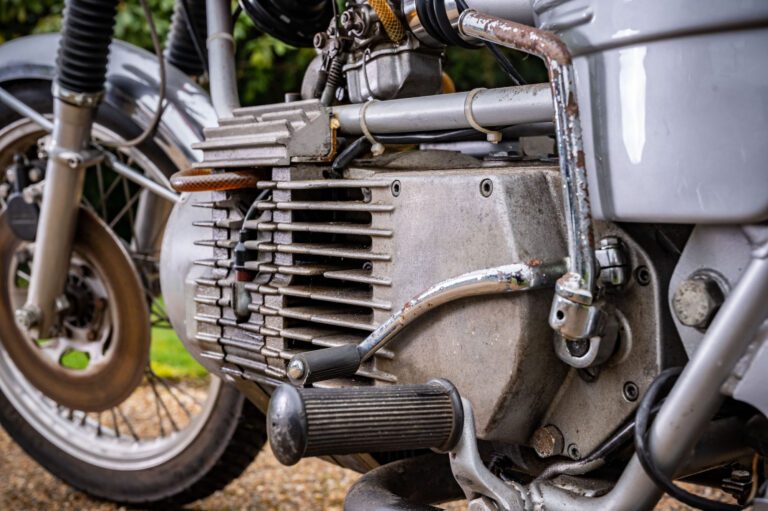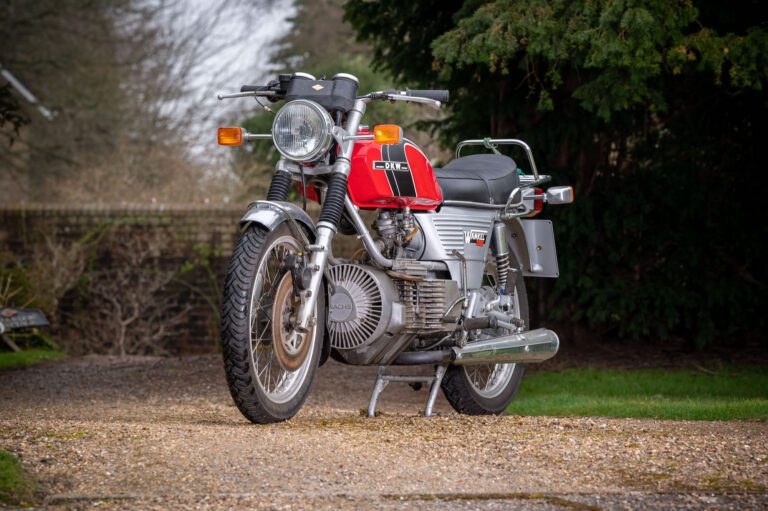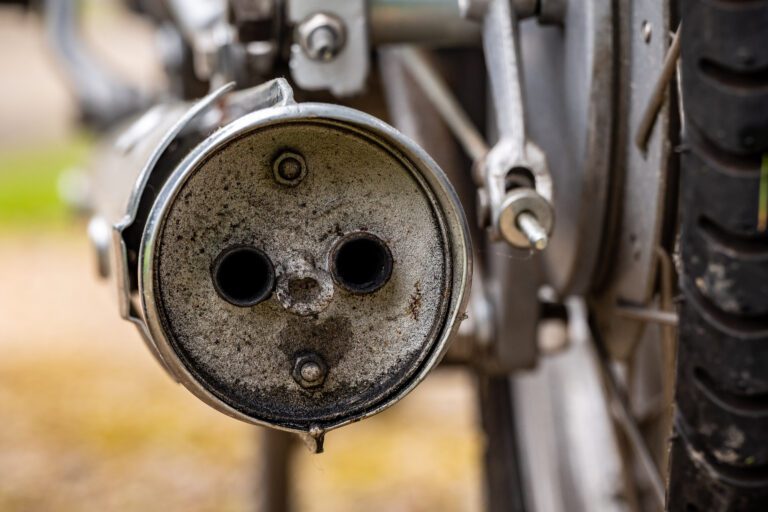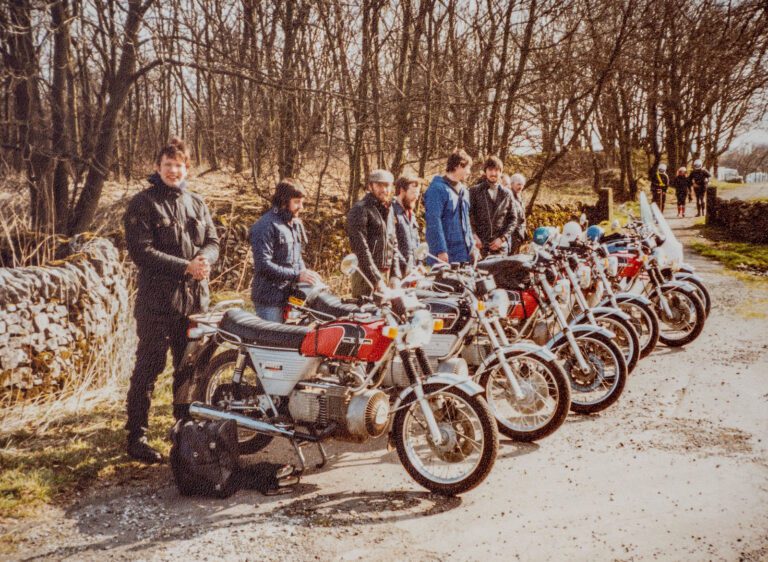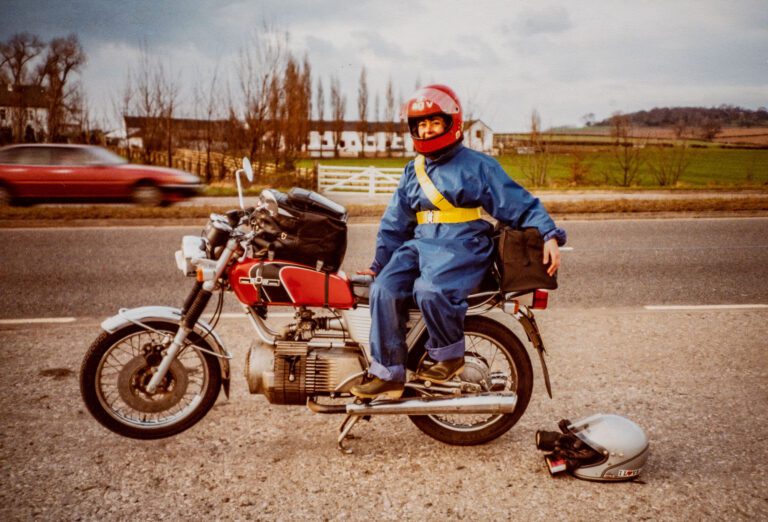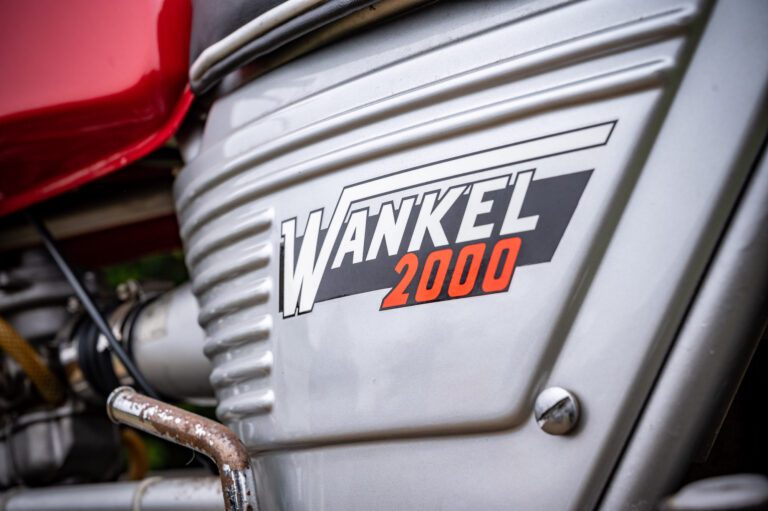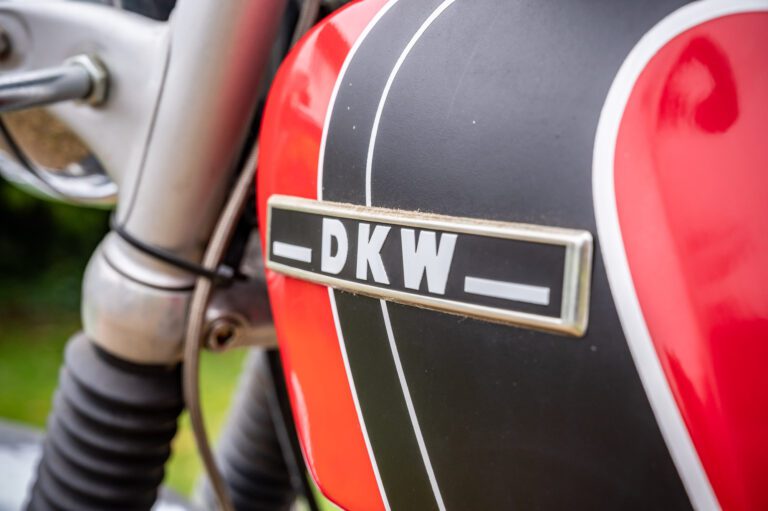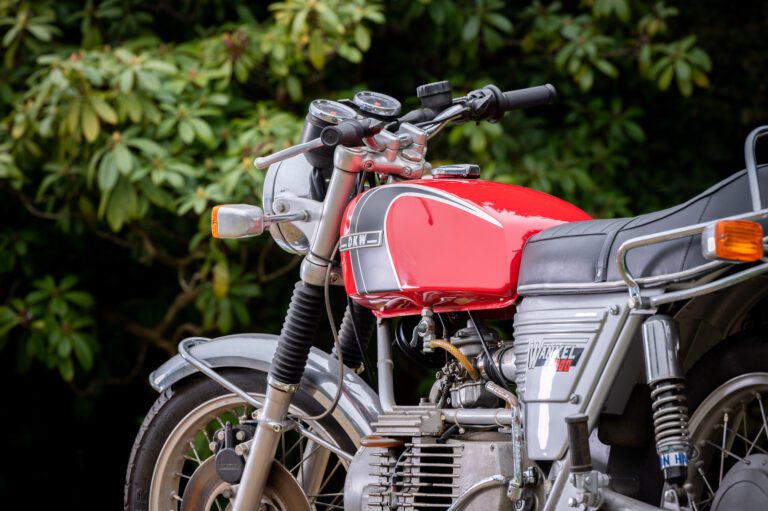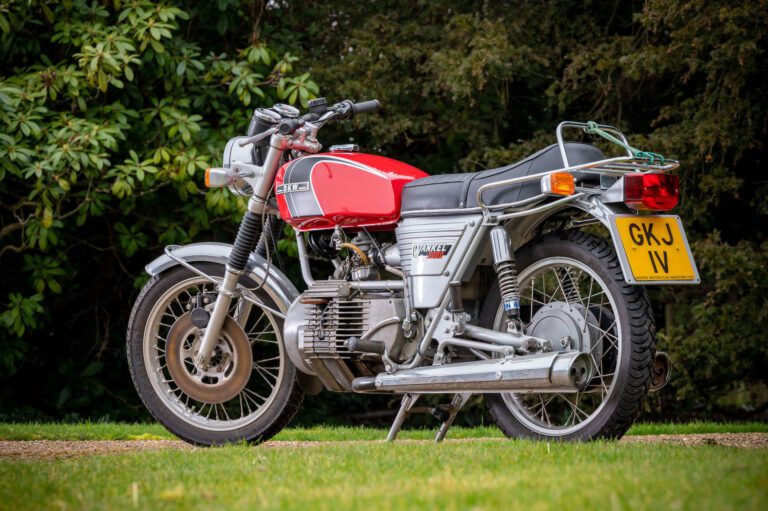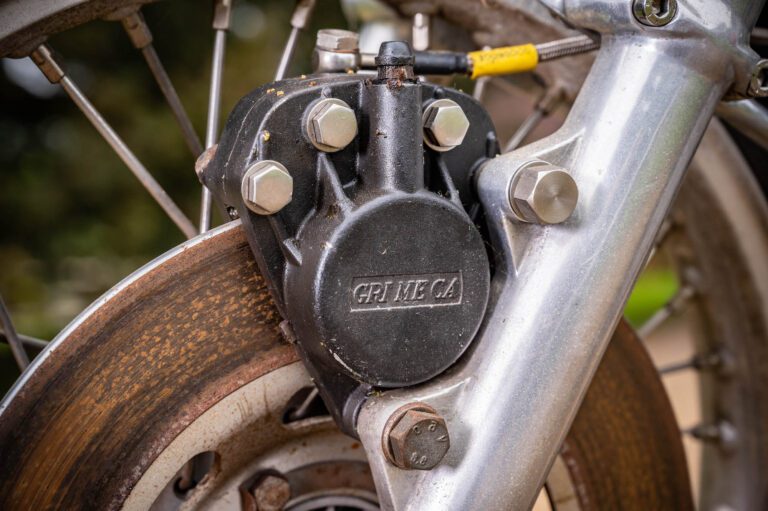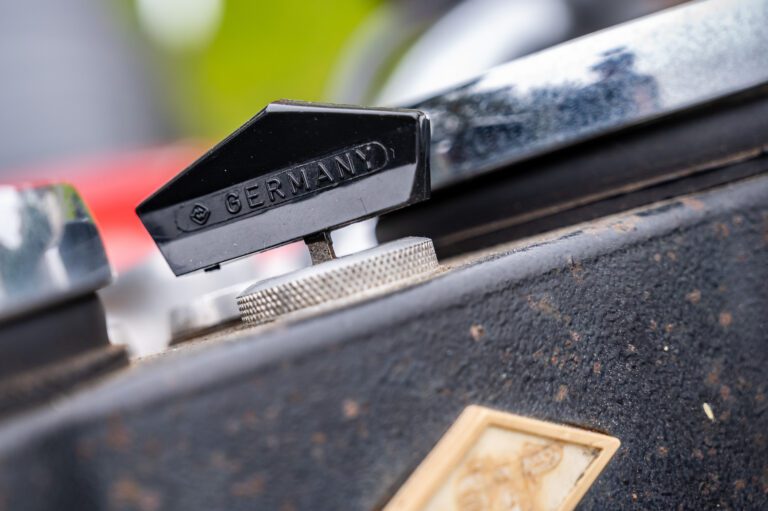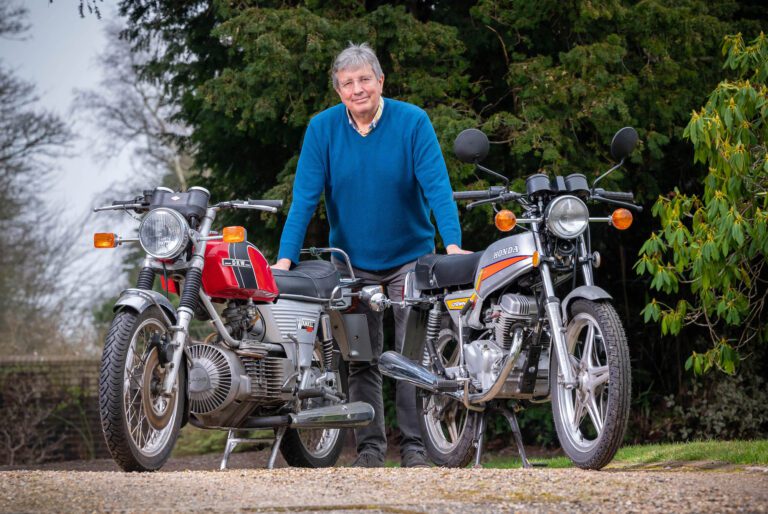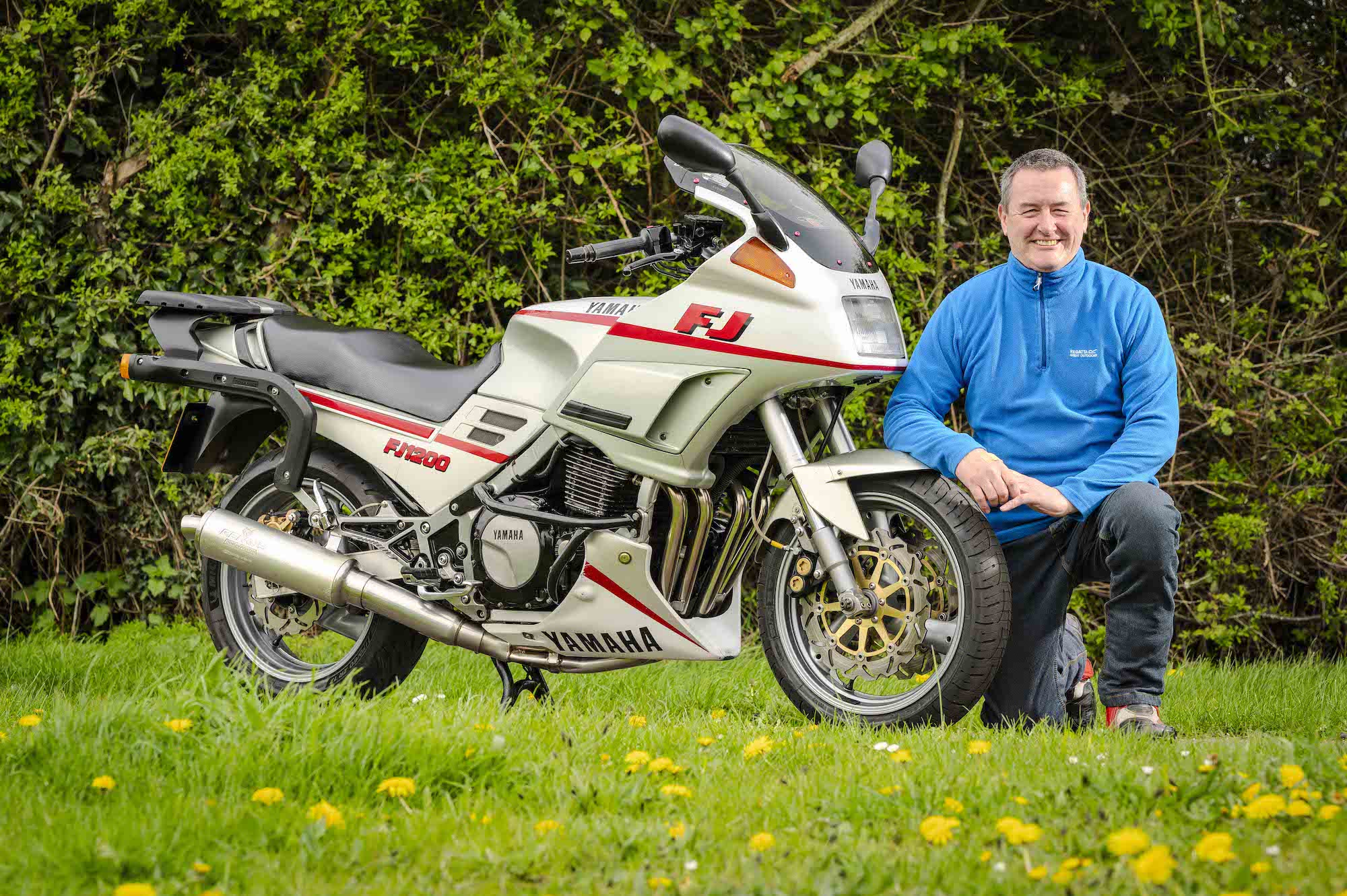In many ways, Andrew Cameron’s two motorbikes couldn’t be more different – the peppy, high-revving Honda CB125 Twin and the somewhat eccentric DKW W-2000, with its Wankel rotary engine.
But they both served a very specific purpose when he bought them in the early 1980s, and they hold an equally special place in his heart four decades and countless memories later.
While the Honda gave him cheap and enjoyable transport to get about London as a trainee doctor, and ferried him and his future wife Susan about on dates, the DKW gave him a shared passion with his older brother David, a rotary engine aficionado.
“They’re just very personal things – they’re the things that remind me of the happy times,” he says, chatting at his home in Kent. “They’re in the family album, and we’ve made lots of memories with those bikes.
“They’re like a diary of my life”
“There’ll probably come a time when I’ll need to let go of them, but not yet. They’re like a diary of my life.”
Andrew was 21 and a trainee doctor working at Guy’s Hospital in London when he decided he could no longer solely rely on public transport to get about.
“It just so happened that a colleague’s wife had passed her test on this Honda 125, and so they were getting rid of it,” he says. “It was perfect, and when I saw it I fell in love with it. It had done very few miles, and was like a brand new bike. I learned to ride on it and passed my test on it.”
Having never ridden a motorcycle, or driven a car, there was a certain amount of trial and error involved in the days before compulsory basic training.
“I can remember the first trip I made, from Peckham to Hounslow, and I dreaded coming up to traffic lights because clutch control is a learned skill, and every time I stopped there was a chance of stalling the bike,” says Andrew. “I remember when I got home I had a large whisky. I don’t drink, but that really calmed everything down – driving across London on that for the first time, yes, it was very stressful.
“It’s important to remember that, because you forget those details and then don’t have empathy with young people, so when I see a young person on a bike I’m very aware.”
“So nippy”
Andrew quickly got the hang of it, and soon passed his test on the Honda, a 1978 T2 model, unrestricted and “so nippy with a great turning circle”.
“I probably wouldn’t have admired my riding skills if I was a car driver at that age,” he says. “I was nipping around to get from A to B.”
As well as commuting, the A to Bs included dates with Susan, and runs from his home in Peckham to Tunbridge Wells, where she was a midwife at Pembury Hospital.
“When I first met her, I remember we went to the theatre in Cambridge Circus, an Andrew Lloyd Webber, and we got back to our flat in Peckham in less than 15 minutes,” says Andrew. “That was because of the bike, because you could park outside the theatre – they had a little row of motorcycles.”
He got to know the A21 to Tunbridge Wells very well, and the road was the scene of one of two mishaps that left him with bruised pride.
The first was at a bus stop in Peckham.
“It had rained, and with the diesel and oil it was like an ice rink,” he says. “As I rode across it, the bike just flipped away from me. It gave me such a shock – that’s why I became very cautious of bus stops after that.
“Then, coming down the A21 I came off because there was gravel all over the road – I don’t know how it got there – and I’m now very cautious, especially with the condition of the roads now.
“My pride took a hammering
“I didn’t hurt myself, but my pride took a hammering. That crash is why the indicators and mirrors are new. At the time there were crash bars on it, so that probably protected the crankcase.”
The Honda was Andrew’s only form of transport for two years when, thanks to brother David, he started looking for a rotary-engined DKW.
“David had a ‘Deek’ and, in a sense, it was a way to be brothers together,” he says, “a nice way to stay in touch with him and, of course, he then sourced spares so it was lovely.”
In 1983, the pair ended up in the private garage museum of the late owner of Westree Motors in Maidstone.
“He was one of David’s contacts, he’d died and his wife wanted to sell all the bikes,” says Andrew. “We went round one evening on the 125, and it was a museum of beautiful bikes, all beautifully kept, and in the corner was the Deek.
“I couldn’t believe it had 0000 on the tachometer, and she said ‘I just need to ask my sons how much’. It was something like £1,000, which I could afford.
“I was buying a bike where I knew the history”
“There was a thrill that no-one else had ridden it – I was buying a bike where I knew the history.
“I think he’d bought it for himself rather than to sell, because it ended up in his museum garage, but it never saw the road. It was a set of bikes that he’d obviously loved and kept in beautiful condition.”
The bike in question was a DKW W-2000, known as a Hercules everywhere apart from the UK, manufactured in 1976, first registered in 1978, and never ridden.
It was the first rotary-engined motorcycle in full production in the world, powered by an air-cooled, single-rotor 294cc Wankel designed by Sachs as a snowmobile engine and producing between 27 and 32bhp.
Just 1,800 bikes were built between 1974 and 1977, not enough to turn a profit as traditional motorcycle buyers were reluctant to embrace the innovative rotary technology, possibly put off by the poor reliability reputation of the early NSU Ro80 cars, which were plagued by rotor tip wear.
“When I bought it, my medical student friends all said ‘the tips wear’, and that’s something that just spread like a virus,” says Andrew. “You feel like you want to be an evangelist – ‘no, it’s great’.
Tip wear trick
“The secret is to use an oil with a low ash content. DKW said that ash deposits build up on the rotors, and that will cause problems.
“As the epitrochoid rotates there is some movement of the seals, which are on springs, so if they start to lose their ability to move I think that’s when you might have issues.
“But I’ve never had any engine problems; the front plate, rotor housing, and rear plate have never been apart. It didn’t look great, but it was incredibly reliable.”
The DKW was trailered back to Peckham, where the oil was changed and David carefully kicked over the engine to make sure it hadn’t seized after seven years of inactivity. Then it was ready to go.
Can Andrew remember that first ride? “Yes, and it was lovely,” he answers almost reverentially.
“It doesn’t look very attractive, but the engine is low down, and it held the road like it was on rails, it was so stable, and it pulled away so smoothly and gets smoother as it gets faster.
So smooth it felt like an automatic
“From the outset you were doing almost clutchless gear changes. Sue on the back asked me if it was an automatic, because it was just so smooth.”
The DKW became Andrew’s commuting bike, completing the 60-mile round trip in all weathers from Tunbridge Wells, where he’d moved to be with Susan, to Guy’s in London.
“Because it’s fan cooling, it blows out warm air onto your feet, so my feet were warm, but nothing else was,” he remembers. “At night, when you’re riding along, the exhaust pipe glows red by your right foot.”
He also accompanied David on Wankel rallies, including one in Northampton (pictured) and a trip down to Devon.
“When you have a whole load of these going together it sounds like the Luftwaffe coming,” he smiles. “It’s got enough power to tootle along on the motorway, two up, at 70mph.”
The bike is officially a 294cc but, as there are three chambers in the rotor housing at any one point, it’s more like a lightweight 882cc, with about the same power as a Honda CB400.
So where does the 2000 name come from?
“I often get asked ‘is it a 2000cc?’” says Andrew, “and the other classic one is ‘is that the engine with no moving parts?’
“But I think it was ‘Wankel for the year 2000’, and it did look futuristic, but it doesn’t look like a motorbike. It looks like something you’d made at home and slung an engine underneath.”
Honda and DKW were out of action
When the first of four children came along in 1985, both the Honda and DKW “sort of just sat there” for many years.
By then, Andrew had passed his driving test, which he found fairly straightforward after several years of motorcycling.
“You’ve got the road sense, and you know that every pedestrian is trying to commit suicide, and every car driver is trying to kill you,” he jokes. “I don’t think that’s changed, so after riding a bike you tend to drive very defensively.
“So we went to cars, and the bikes just sat around. A lot of people said ‘get rid of them’, but I loved them. I’ve never heard anyone say ‘I’m glad I got rid of that bike’.
“I’m 6ft 2in, and I know I look a little bit silly on the Honda, a bit big, but it was a fun bike to ride.”
But then in the mid ‘90s, Andrew’s children started to enquire about the bikes sitting in the garage, and it prompted him to get the DKW out and ride it around the garden.
“Sort it out or get rid of it”
“It had sat there for about 10 years and it started up fine,” he says. “I think Sue might have said at that point ‘sort it out or get rid of it’.”
Needless to say, getting rid of it wasn’t an option, so towards the end of the last century Andrew removed all the chrome and took it to a place in Hythe to be rechromed.
“It looked nice to begin with but now it’s all peeling off, and I’ve been hurt by that because it’s been kept inside,” he says, at the same time having the damaged petrol tank resprayed by a patient at his GP surgery in its original red.
“I can’t be sure but I think someone had a BBQ in the area because there were little blisters, like eczema, all over it. I showed it to the paintshop and he said he could only assume it had got hot in those little areas.
“He did a super job. He knew I was obsessive and he said ‘you won’t be able to tell the difference in the colour’. He hand-painted the different thicknesses of the stripes exactly as it was.”
For the past 20 years, Andrew admits he hasn’t used the ‘Deek’ enough, a combination of family and work taking up much of his time, “the most precious possession we have”.
“When the children left it was again one of those ‘deciding’ moments – what are we going to do with the bike? Are we going to use it, are we not going to use it?” he says. “So it’s been about getting it up and becoming a fairweather rider.
“Happy memories”
“I think we need to use it more, and every time I speak to Susan she says we don’t get out on it enough. She loves being a pillion, and she loves being on the bike – it’s got happy memories for both of us.
“The A21 has the Mayday Run, where all the bikes head off to Hastings, so that’s our aim.”
Of the couple’s four children, son James is the only one who rides, and he has expressed an interest in one day taking on the bikes.
“I’ve asked him if he wants them and he said ‘yes’, but whether he’ll be able to nurture the Deek I don’t know,” says Andrew, 63. “He rides a Honda Fireblade, and that’s a young man’s bike.
“He asked me to get on it, and I couldn’t get my leg over. To pose for a photograph they had to lift my leg to get it over.
“He’s ridden the Deek, but when you go back to the old-style bikes you need to know how to look after them. I know how to start it, because it’s got a choke on it and you need to have the choke at the right level and then feed it down.
“Don’t do anything harmful to it, be gentle with it and it’ll serve you well. I’m not sure he understands that relationship. I love the idea that you nurture it and get it right.”
Whatever the long future holds for the bikes, Andrew hopes to get many more miles under his belt, especially on the oddball German bike that tried and failed to start a rotary revolution.
